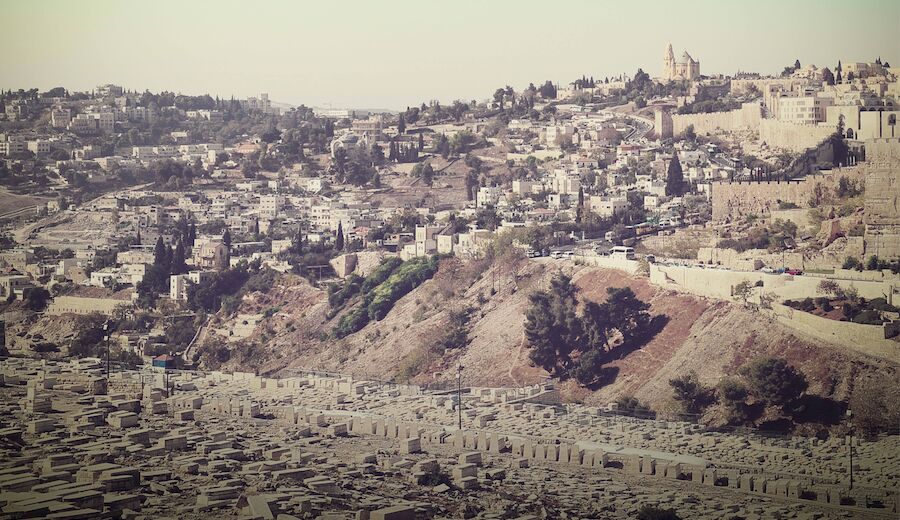In Isaiah 40:9, the Prophet Isaiah explains his message to the people of Jerusalem and the kingdom of Judah. “O thou that tellest good tidings to Zion, Get thee up into the high mountain; O thou that tellest good tidings to Jerusalem, Lift up thy voice with strength; Lift it up, be not afraid; Say unto the cities of Judah: ‘Behold your God!’”
The phrase “tellest good tidings” is used twice in that one verse. Despite being occasionally mislabeled as a “prophet of doom,” so much of the Prophet Isaiah’s message is uplifting and positive. And he delivered his message with all the strength and excitement he could muster.
At the Armstrong Institute of Biblical Archaeology, we identify with Isaiah and his “good tidings.” When you think about Jerusalem and Israel, and all of the extraordinary historical and archaeological sites across the nation, it’s inspiring. Nothing brings the ancient history of the Bible alive like a visit to the Ophel or the City of David, or one of the plentiful biblical sites in Israel, such as Shiloh, Lachish, Gezer, Megiddo—the list goes on.
Actually, the practice of biblical archaeology extends well beyond the borders of Israel. Consider the Hittites, featured in the cover story of this issue. Until the early 20th century, the Hittite civilization confounded scholars and archaeologists. They would read the biblical text, which has a lot to say about the Hittites, and marvel at the fact that there was no archaeological or textual evidence to support the Bible. This dearth of evidence led some to reject the biblical history of the Hittites as fiction. Others concluded that the Hittites must have been a marginal and irrelevant people.
Then the narrative suddenly changed. By the early 1900s, scholars and scientists were gaping at not just the presence of a Hittite civilization but also its impressive nature and territorial size. Some even noted that the archaeology and textual evidence being uncovered aligned with the biblical text. The way the Hittites went from being a “fictional” civilization to a recognized regional superpower is a wonderful story, and it is beautifully told by Christopher Eames and George Haddad (to read click here).
In a way, the example of the Hittites encapsulates the Prophet Isaiah’s message in Isaiah 40: It’s “good tidings” that one can “behold.” It also encapsulates the purpose of the Armstrong Institute of Biblical Archaeology. Like Isaiah, we want to share the history and archaeology of the Hittites and others, and their connection to the biblical text, with the people of Israel. They might have been primarily centered in modern-day Turkey, a good distance from Jerusalem, but the Hittites—like many Near East peoples and numerous archaeological sites and discoveries—demonstrate the credibility of the biblical text and how important it is as a tool in archaeology across the region.
Be sure to also read “Psalms of the Fugitive,” by Ryan Malone (click here). An accomplished musician and composer, Mr. Malone is the music director and an instructor at Herbert W. Armstrong College. He has studied biblical history and poetry for many years and currently teaches Biblical Poetry. Mr. Malone’s article takes some of David’s poems and places them in their historical context, which is recorded in Samuel and Kings. This approach to the psalms not only gives added context and power to the poems, it shows how interconnected and complementary the biblical text is.
Finally, I’ll conclude by sharing my excitement for the next issue of Let the Stones Speak. This issue will be a special issue that coincides with the opening of our new exhibit: “Kingdom of David and Solomon Discovered.” (Note: Since the printing of this article in our latest magazine, this exhibit has been temporarily postponed due to the ongoing conflict. Updated information will be provided in the near future.)
This will be significantly longer than a regular issue, filled with detailed and compelling articles—accompanied by original maps and illustrations—that explore the surprisingly vast amount of evidence we have of a monumental 10th-century b.c.e. Israelite kingdom. We’re going to work very hard to make the next issue the most enlightening and impactful we have ever produced. We want it to be monumental and impressive, just like its subject.
Like the Prophet Isaiah, our plan for the upcoming exhibit and the special issue magazine is to share the “good tidings”—to explore all the great archaeological and scholarly work that has been done to reveal the monumental kingdom of kings David and Solomon. You don’t want to miss our next issue!

